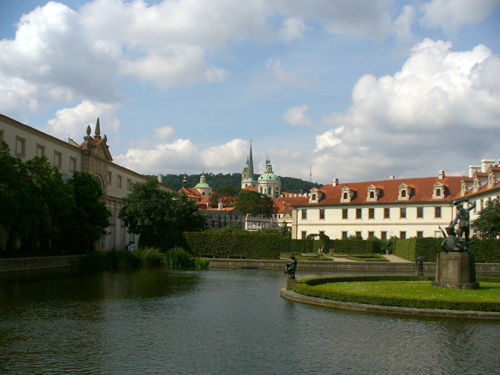 Our guide, Lorin, took us on an unscheduled walk into the Little Quarter of Prague. He first took us to the beautiful Wallenstein Garden.
Our guide, Lorin, took us on an unscheduled walk into the Little Quarter of Prague. He first took us to the beautiful Wallenstein Garden.
 The Wallenstein Palace, whose construction was commissioned by one of the most powerful and wealthiest Czech noblemen General Albrecht Vaclav Eusebius of Wallenstein (1583-1634). The palace was to be his Prague residence which, in its size and splendour, would cast a shadow over all the other buildings of its kind and even compete with Prague Castle itself, which here appears above it.
The Wallenstein Palace, whose construction was commissioned by one of the most powerful and wealthiest Czech noblemen General Albrecht Vaclav Eusebius of Wallenstein (1583-1634). The palace was to be his Prague residence which, in its size and splendour, would cast a shadow over all the other buildings of its kind and even compete with Prague Castle itself, which here appears above it.
It is now used as the seat of the Senate of the Caech Republic.
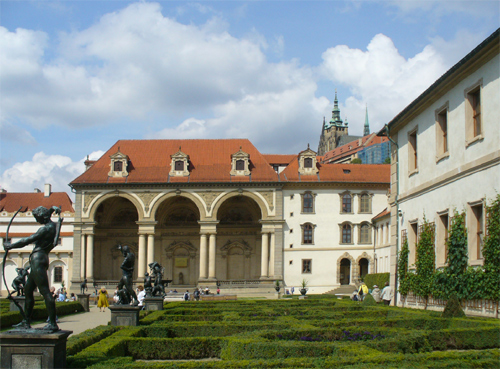 The garden itself with its hedges, statues and the Salla Terrena.
The garden itself with its hedges, statues and the Salla Terrena.
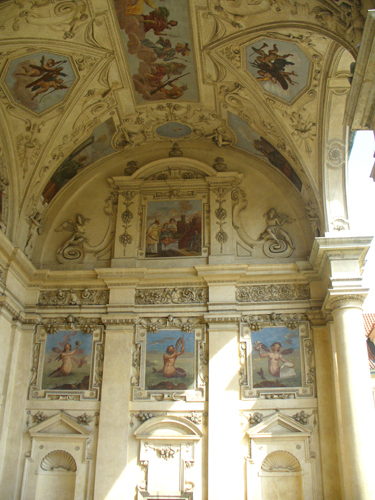
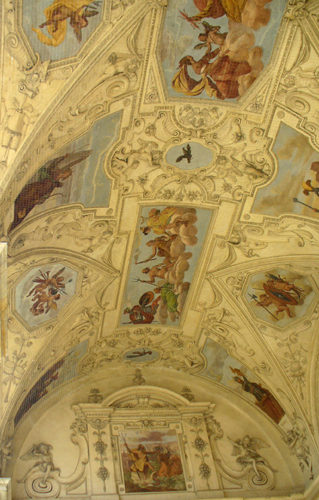
The walls and ceiling of this Salla Terrena are covered with frescoes by Baccio del Bianco.
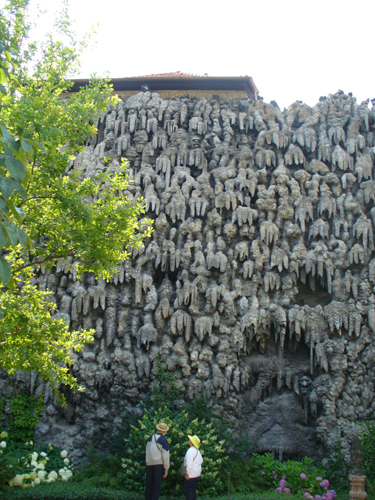 An odd looking wall of dripstone, made with artificial stalactites imitating a limestone cave.
An odd looking wall of dripstone, made with artificial stalactites imitating a limestone cave.
 A view of St. Vitus's Cathedral over the rooftops.
A view of St. Vitus's Cathedral over the rooftops.
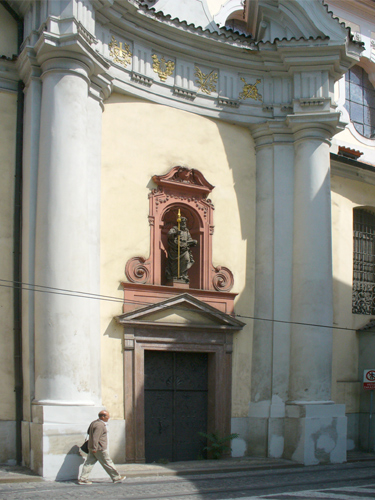
We walked past the St. Thomas Church.
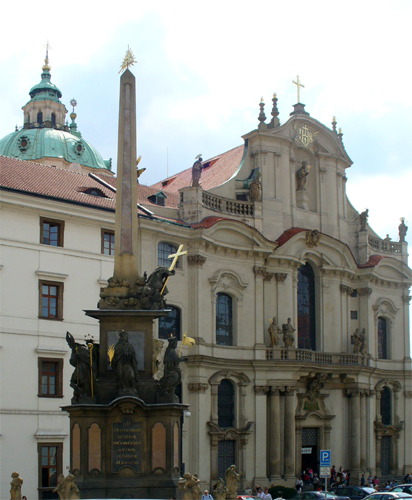 Another St. Nicholas Church, this one the Church of St. Nicholas in the Little Quarter. The building was begun in 1703 and finished in 1761. The monument in the foreground is dedicated to King Carol VI.
Another St. Nicholas Church, this one the Church of St. Nicholas in the Little Quarter. The building was begun in 1703 and finished in 1761. The monument in the foreground is dedicated to King Carol VI.
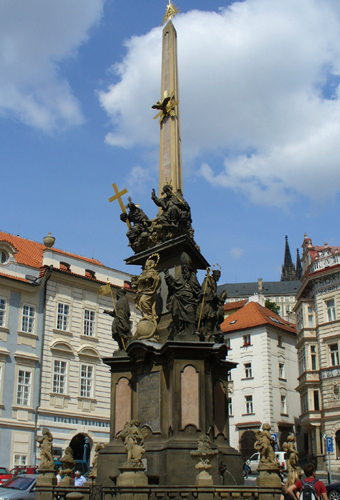
Another view of the monument to King Carol VI.
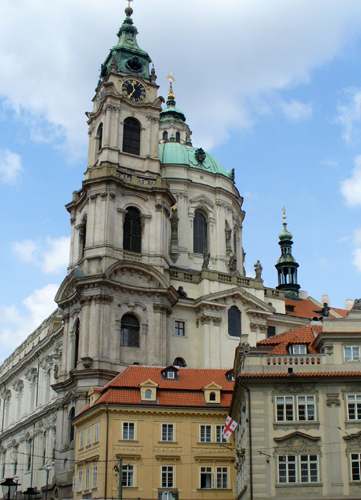 A view of St. Nicholas Church from the rear.
A view of St. Nicholas Church from the rear.
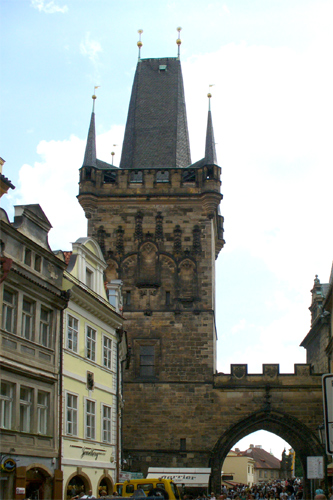 A tower of the Charles bridge from the Little Quarter.
A tower of the Charles bridge from the Little Quarter.

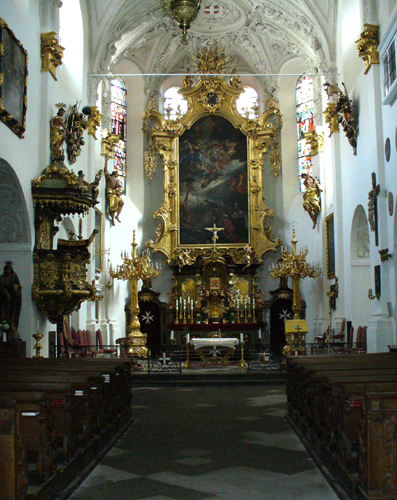 We next walked to the Maltese Square, named after the Knights of Malta who in 1169 established a monastery that used to stand beside the Church of Our Lady. Note the Maltese crosses on the facade.
We next walked to the Maltese Square, named after the Knights of Malta who in 1169 established a monastery that used to stand beside the Church of Our Lady. Note the Maltese crosses on the facade.
 We began to cross the busy Charles Bridge.
We began to cross the busy Charles Bridge.
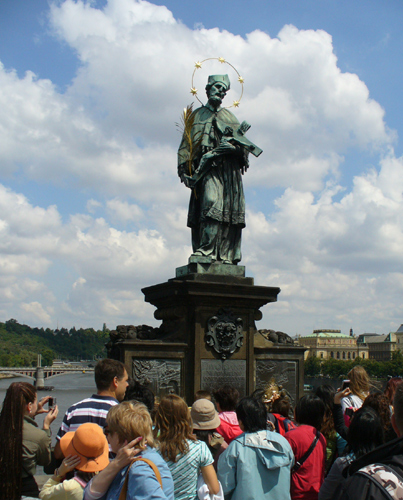 It was especially busy around this statue of St. John Nepomucene, since touching the plaque at the bottom would guarantee good luck. St. John Nepomucene is a national saint of Bohemia, drowned in river Vltava at the behest of Wenceslaus, King of the Romans and King of Bohemia. Later accounts state that he was the confessor of the queen of Bohemia and refused to divulge the secrets of the confessional.
It was especially busy around this statue of St. John Nepomucene, since touching the plaque at the bottom would guarantee good luck. St. John Nepomucene is a national saint of Bohemia, drowned in river Vltava at the behest of Wenceslaus, King of the Romans and King of Bohemia. Later accounts state that he was the confessor of the queen of Bohemia and refused to divulge the secrets of the confessional.
 The tower at the other end of the bridge.
The tower at the other end of the bridge.
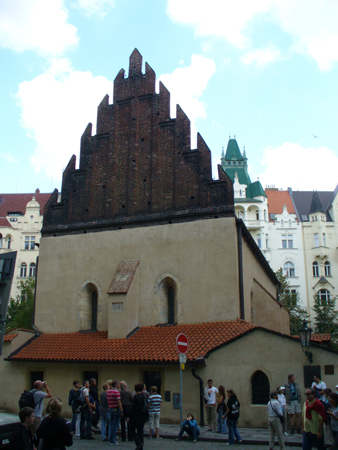
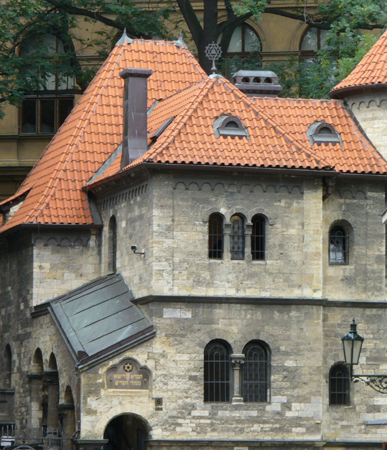
We spent a short time in the Jewish Quarter. The building on the left is the Alt-neu Shul (Old-New Synagogue), Europe's oldest active synagogue. The building on the right is the Klausen synagogue.
 We took one last walk through the Old Town Square on our way to lunch.
We took one last walk through the Old Town Square on our way to lunch.

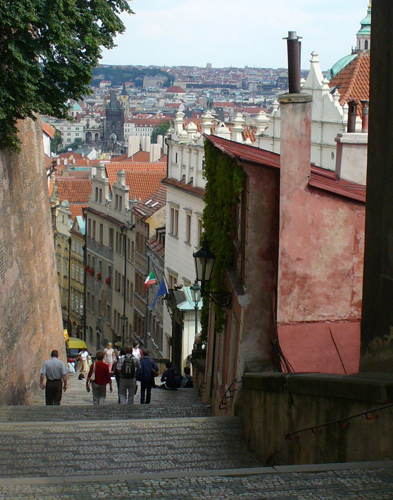
After lunch Elizabeth and walked decided to see the inside of St. Vitus's Cathedral. That required walking back across the Charles Bridge and then up these 200-some steps. We made it and had this view of the stairs and the city below.
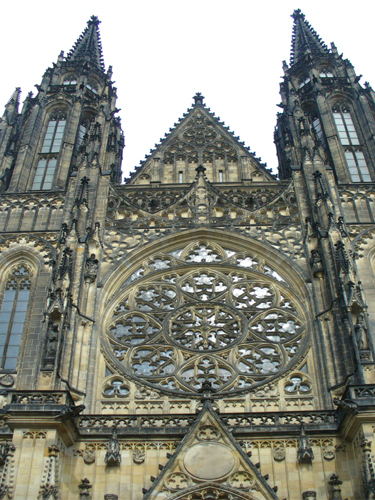 The front of the Cathedral with its large rose window. The architects of the renovation of the 1920's had sculptures of themselves included directly below the rose window on the right side.
The front of the Cathedral with its large rose window. The architects of the renovation of the 1920's had sculptures of themselves included directly below the rose window on the right side.
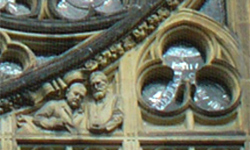
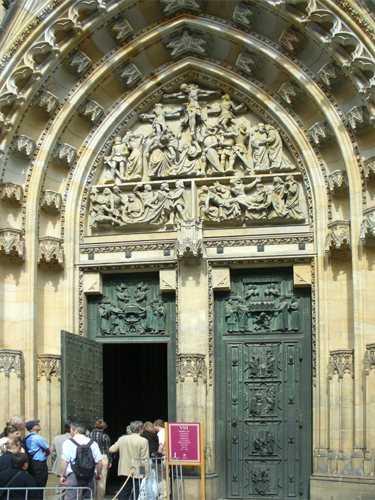 The crowd at the main entrance was not nearly as large as it had been the day before.
The crowd at the main entrance was not nearly as large as it had been the day before.
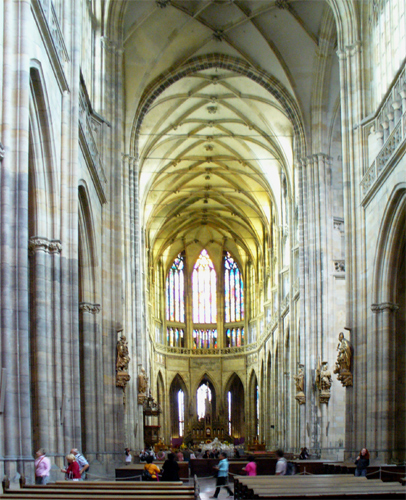 The interior was breathtaking.
The interior was breathtaking.
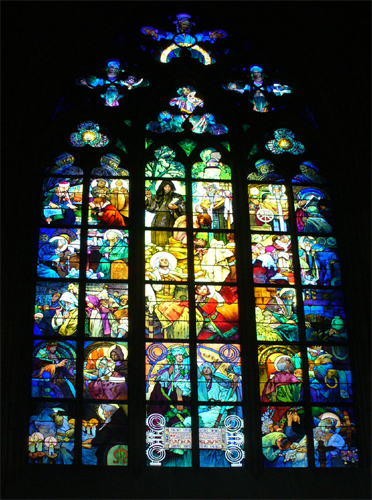 There were many beautiful stained glass windows but this is probably the best known, done by the famous Czech Art Nouveau painter Alfons Mucha in the 1920's.
There were many beautiful stained glass windows but this is probably the best known, done by the famous Czech Art Nouveau painter Alfons Mucha in the 1920's.
This window depicts scenes from the lives of Sts. Cyril and Methodius.

 Other windows depicted saints of the Church. Here we see the Saints Ludmilla, Methodius and Wenceslaus.
Other windows depicted saints of the Church. Here we see the Saints Ludmilla, Methodius and Wenceslaus.
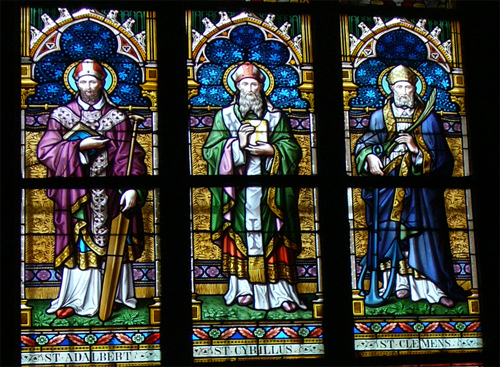 In this window we see the Saints Adalbert, Cyril and Clemens.
In this window we see the Saints Adalbert, Cyril and Clemens.
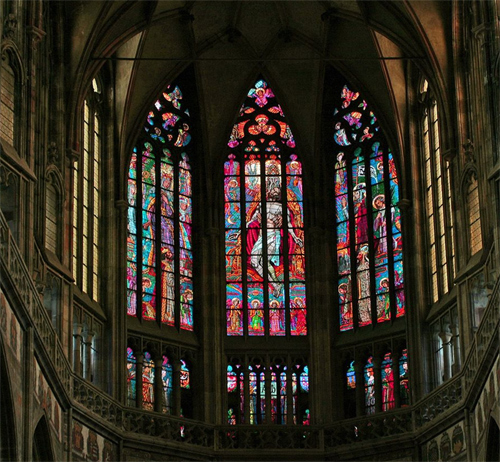 The large windows at the end of the cathedral. Photo by jones.
The large windows at the end of the cathedral. Photo by jones.
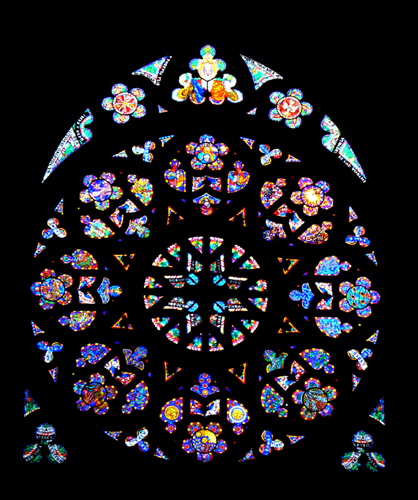 The rose window is a beautiful example of stained glass craft in Prague. It is rather new, dating from the 1920s and represents scenes from the biblical Creation.
The rose window is a beautiful example of stained glass craft in Prague. It is rather new, dating from the 1920s and represents scenes from the biblical Creation.
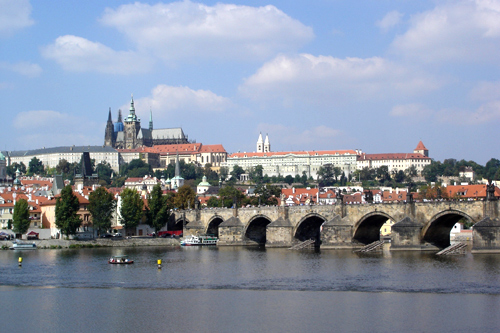 Let us leave with one last view of the Castle Hill and St. Vitus's Cathedral. Photo by Tim Emert.
Let us leave with one last view of the Castle Hill and St. Vitus's Cathedral. Photo by Tim Emert.
This was a meaningful way to end our trip. From here we returned to the hotel, said goodbye to the new friends we had made, and prepared for the long flight home the next day.
